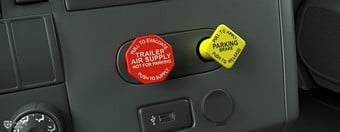Several key sectors in the great state of Pennsylvania can offer economic opportunities to drivers of combination vehicles (such as semi-trucks and tractor-trailers). Pennsylvania’s agricultural sector produces mushrooms, apples, poultry, and many other agricultural products. Much of this is exported from the state by truck. The state’s five manufacturing centers need truck drivers to transport materials to the manufacturers and transport their finished products. Pennsylvania’s proximity to New York, New Jersey, and Washington, DC have helped make the state (especially the Lehigh Valley) a major logistics hub, creating a demand for long-haul truck drivers. Finally, the Port of Philadelphia, one of the fastest-growing ports and the largest refrigerated port in the country, needs truckers skilled in intermodal transportation and the transportation of refrigerated products.
Major truck routes in Pennsylvania include Interstates 76 (the Pennsylvania Turnpike), 78, 80, 81, and 95; U.S. Routes 22 and 30; and State Route 283.
To have a career driving heavy combination vehicles such as semi-trucks and tractor-trailers, you may have a long road ahead of you (pun intended). To drive commercial motor vehicles (CMVs), you must meet all the requirements to obtain a Commercial Learner’s Permit (CLP) and then a Commercial Driver’s License (CDL) of the appropriate class (likely Class A for heavy combination vehicles). But to be allowed to drive heavy combination vehicles specifically, you must also pass the official Combination Vehicles knowledge test on the theory of operating combination vehicles.















